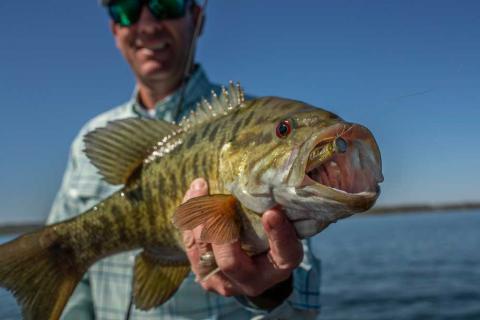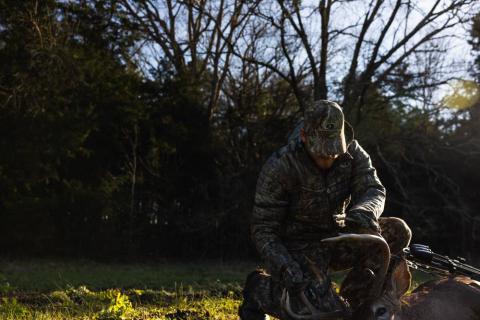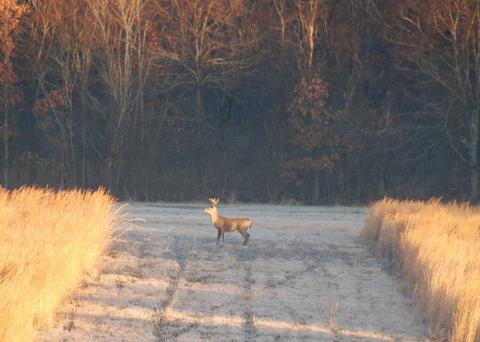Chris Bridges
North American forests and grasslands are home to a wide variety of plants that are particularly productive for wildlife food and cover. Some of the most important are also not particularly showy with regard to either stature, color or flowering pattern. As we drive around and take stock of rural roadsides at different times of the year, elderberry is one of the more lowly but productive shrubs that I have started trying to notice and appreciate. While not especially showy with regard to foliage or growth pattern, it is a prolific producer of food and cover for a wide variety of game and nongame wildlife species and deserves consideration when designing native tree orchards or habitat improvement plantings for wildlife.

ELDERBERRY IDENTIFICATION AND GROWTH
Elderberry is a common shrub of forest edge and old fields that many of us have walked over countless times without likely noticing. I have commonly confused the foliage with similar short trees or shrubs with compound pinnate leaves. However, after I started noticing the abundant production of berries and looking a little more into the literature on the different birds and small mammals that feed on elderberry, I have tried to identify exceptional trees that are prolific producers. White clusters of blooms are produced from May to July and the tiny purple to black berries mature in August to September. The shrub usually gets no taller than six to fourteen feet tall and often puts up multiple stems.
While elderberry will colonize many old field sites, it prefers well-drained deep soils. I have encountered it on shallow soils or sites more prone to drought, which may indicate local adaptability of certain ecotypes. However, the species is known to have a shallow, fibrous root system so caution should be used on sandy sites. I have also had some success in transplanting to dry upland sites with higher clay content and have found this to be a particularly resilient species as long as competition is controlled and sufficient moisture is present, particularly during the establishment period. Because it is perennial, I have found many stems shoot up following mowing. Flowers and fruit are produced on growth from both the current year and older stems.
ELDERBERRY PLANTING AND MANAGEMENT

Greater interest in cultivation of elderberry has been noted in recent years for a wide variety of purposes. Although there is some interest in garden plantings for the flowers, there is more interest in the medical benefits of elderberries. Extracts, syrups and supplements made from elderberries are available in many stores. Elderberries should not be eaten raw, as there are many potential negative side effects.
The increased commercial interest in growing elderberry for these markets has resulted in greater research by universities to provide reliable recommendations for growers. Like many fruit and nut crops, it can be advantageous for folks growing elderberry for wildlife to take some lessons from those growing the same plant for commercial berry production.
Among the most important considerations for any elderberry planting is site preparation and competition control. Often this is likely best started well in advance of planting. The use of herbicides or cultivation can be used to prepare sites for planting, but caution should be exercised in soil disturbance on sloping sites to prevent erosion. Soil sampling prior to planting can provide guidance on soil fertility. Since elderberry is a native shrub, it is likely accustomed to moderately acidic soils but lime should be used to ensure that pH is between 5.5 and 6.5. While no fertilizer is recommended at planting to prevent the encouragement of competition, stands can benefit from small amounts of nitrogen to increase fruit production during the growing season.
I am also very interested in row spacing to maximize wildlife benefits in planted elderberry stands. Because wildlife plantings are likely to include a diversity of species, likely the most important thing to think about is the equipment being driven between rows. The size of equipment being used for cultivation between plants, spreading fertilizer or more likely for mowing and controlling competition, is important to determine when designing plantings. Commercial elderberry plantings often use a spacing of twelve feet between rows and four feet within rows. Some consideration must be given to the horizontal expansion of stems, long-term plans for the site and optimizing fruit production.
As with other tree crops planted for wildlife, attention should be given to selection of quality planting stock. The use of reputable native plant nurseries is important for getting elderberry plants grown for optimum survival and fruit production. Cages can be helpful to prevent deer browse damage when plants are small. This can also help to mark plants to avoid during competition control with either herbicides, mowing or cultivation. With adequate care during establishment, I have been surprised and impressed by the rapid growth and production of elderberry as an important component of wildlife orchards and habitat improvement projects.




























